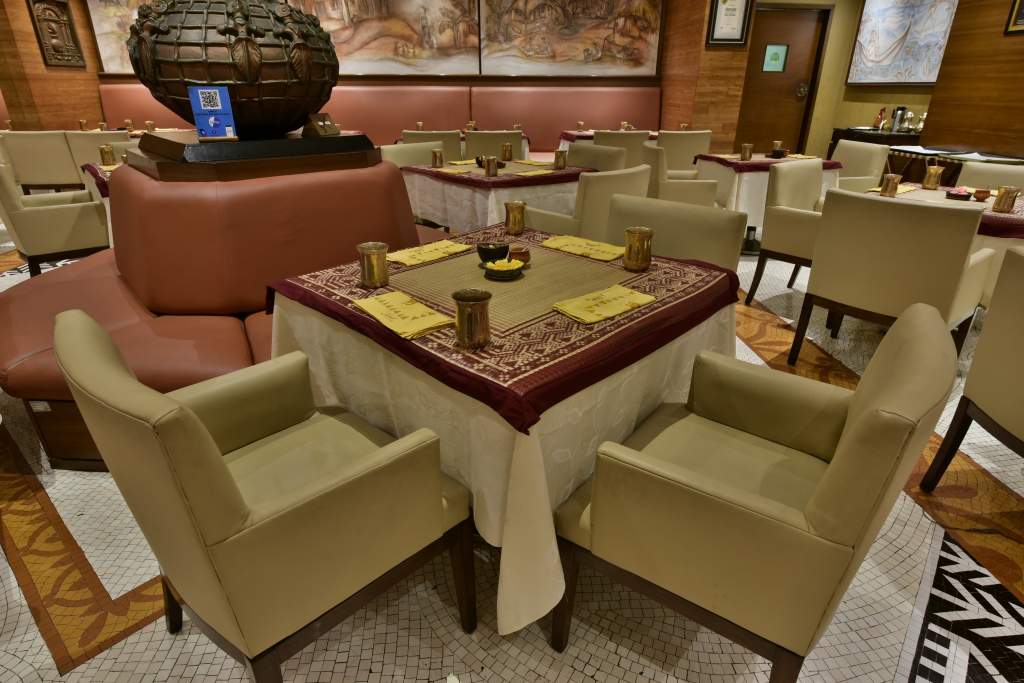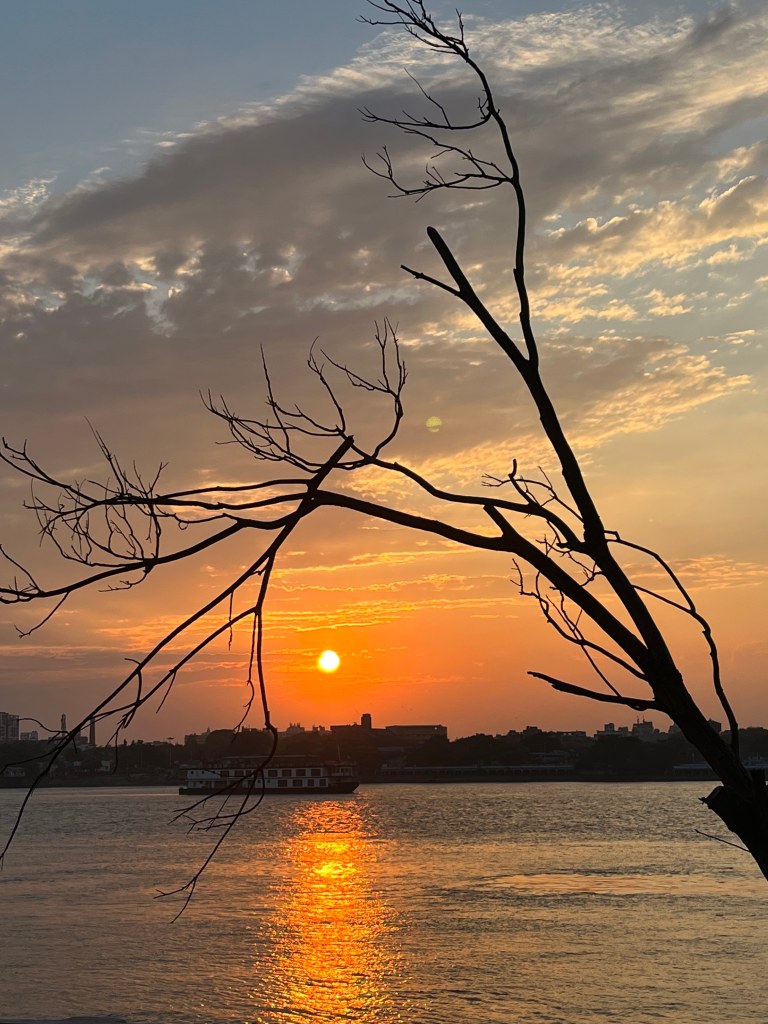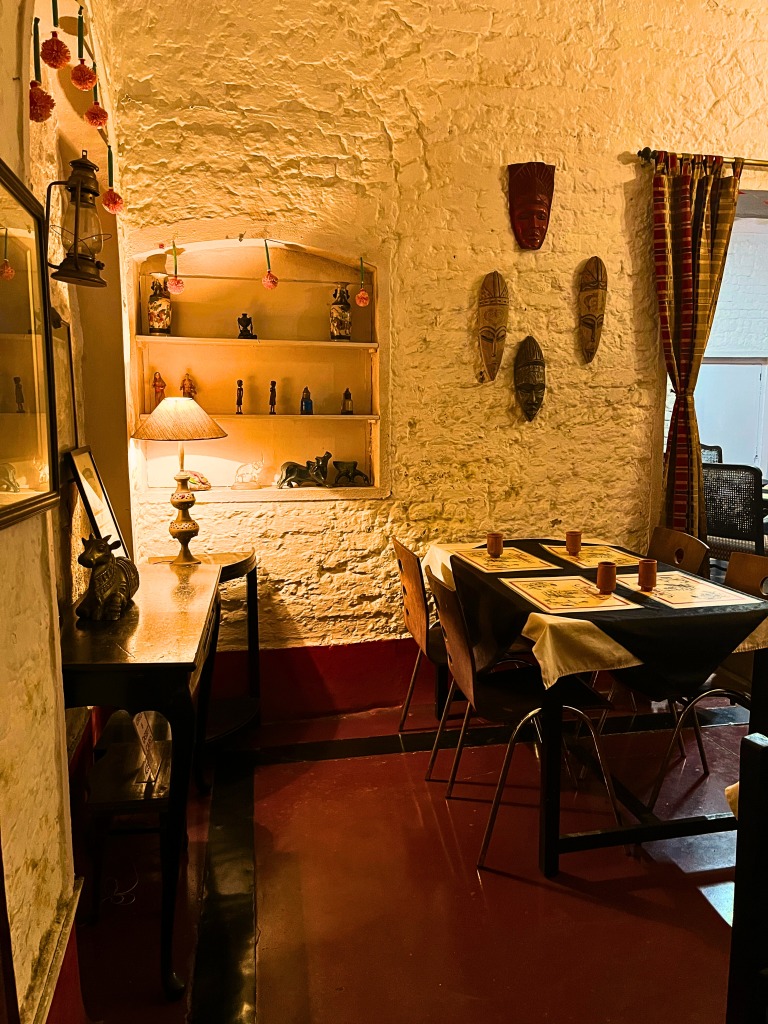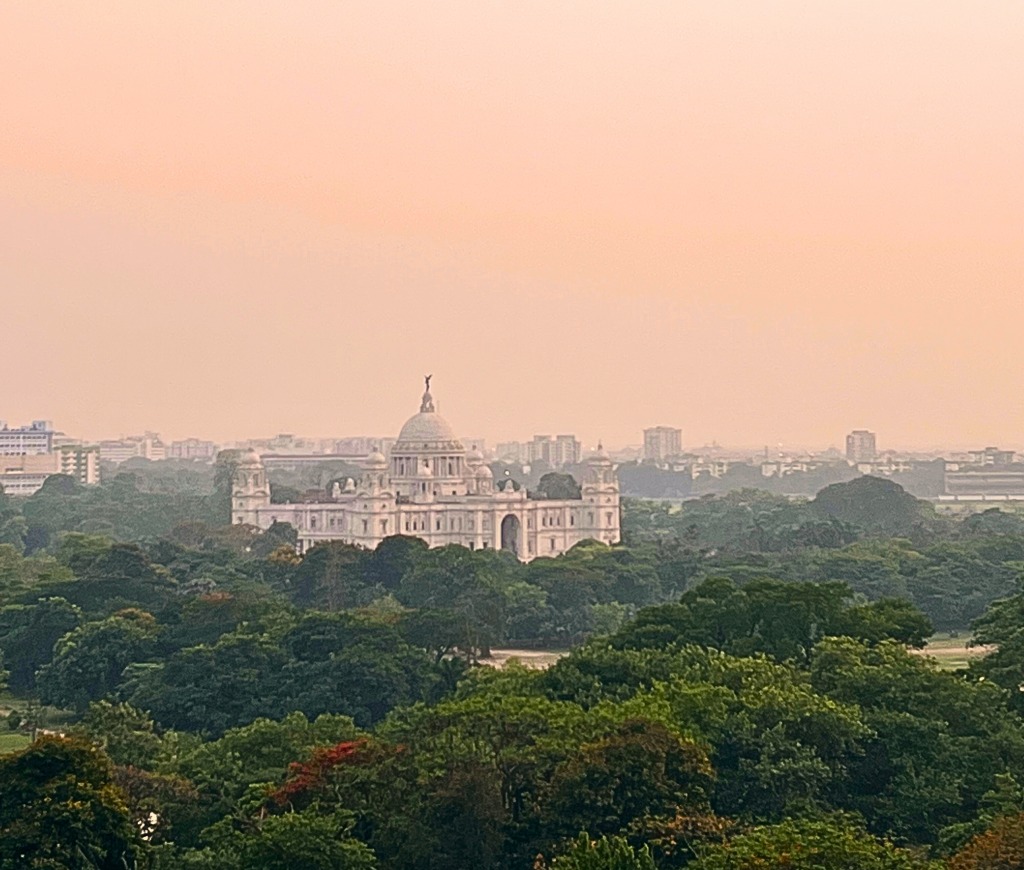I’m sitting with a feast in front of me, a gleaming copper platter laden with 12 courses of traditional Bengali delicacies… aromas wafting off fresh luchi (fluffy deep fried flatbreads) that were born to be enjoyed with a subtly sweet chhola dal (lentils with coconut), while a batter-fried sliver of mango fish balances delicately off the small bowls arranged around the plate holding delicacies like aloo posto (poppy seeds with potatoes), bhetki paturi (fish in a piquant mustard sauce baked in banana leaf), daab chingri (prawns in a coconut sauce), mutton kosha (melt-off-the-bone slow-cooked lamb curry) and mishti doi (sweet yoghurt)…
Suddenly I’m nine years old again, enjoying a festive Sunday lunch at my grandmother’s home. It’s funny how taste can take you back in time.
But in actual fact, I’m a few decades older, sitting at Aaheli a pioneering restaurant in the heart of Kolkata, India’s eastern metropolis. Aaheli was the first restaurant of its kind to bring the food of Bengali homes into a fine dining setting 30 years ago, and over the years, its dedication to respecting the culinary traditions from around Bengal – including carefully guarded recipes passed down through generations – commitment to sourcing fresh produce and warmth of hospitality has remained unchanged. It’s a Kolkata institution.

Kolkata, formerly Calcutta, is the capital of West Bengal (the state was thus named after partition in 1947, to distinguish it from East Bengal or what is now known as Bangladesh), and was once India’s national capital under British rule. Bengal had always been a strategically important region, attracting people for different purposes, from political and religious, to trade and commerce, for several centuries dating back to the medieval period.
Today, it wears an aura of faded grandeur and barely concealed chaos and grime (attributed by many to decades of communist misrule), but scratch the surface, and you will find a city that is culturally rich, progressive and charmingly quirky. And where you are sure to find a dizzyingly diverse variety of excellent food.
In Bengal, the historic confluence of cultures, combined with an incredibly fertile, riverine landscape, has led to the evolution of a cuisine that is intricate yet subtle, with unique flavours that cannot be found anywhere else – and a people who are intrinsically food lovers.

“When any civilisation gets exposed to other communities, the more evolved the culture and cuisine becomes,” explains Sibendu Das, food blogger and food trail curator at @pickletopilaf. “This region also has an abundance of raw materials – not just in terms of agriculture, it is a land of waterways [therefore the dominance of fish in the cuisine]. It’s always been a very rich land where it’s very easy to get good produce; you don’t have to put in any hard work, whatever the season.
“And in a place where people get food so easily, they end up using their time for intellectual and creative pursuits, including exploring creativity in the cuisine.”
[It’s simply science, just look at Maslaw’s hierarchy of needs.]
But Bengali cuisine has always been quite underrated, and is only now starting to get its due attention. Popular US food publication Eater recognised Kolkata as one of the top food cities to visit in 2023, and globally, restaurants celebrating its unique culinary offerings are opening up – cases in point, London’s Darjeeling Express (from Asma Khan of Netflix Chef’s Table fame) and Chourangi.
My probes into why it’s taken this long for the rest of the world to sit up and take notice of what us Bengalis have always known, revealed that the cuisine doesn’t lend itself easily to the restaurant business – mainly due to its reliance on hyper-indigenous, seasonal ingredients and labour-intensive techniques.
I remember my grandmother labouring for hours (admittedly with help from the household staff) to produce elaborate family meals , aromas emanating from the kitchen of classic delicacies like lentils with fish head (don’t knock it till you’ve tried it!), mocha ghonto (a mildly sweet dry curry of banana flower with potatoes), or, when the famed hilsa fish made its brief seasonal appearance during monsoons, steamed fish in hand-pounded mustard gravy. For her, food was a love language.
Of course, everyone thinks their grandma’s food is the best. But one family has managed to take their grandmother’s legendary cooking and turn it into a restaurant. The late Rakhi Purnima Dasgupta was a renowned food columnist and the granddaughter of Minakshi Dasgupta, who authored one of the foremost recipe books of Bengali food, the Calcutta Cookbook. Rakhi opened Kewpies restaurant (named after her grandmother’s nickname) in the ground floor of her central Kolkata home 25 years ago, and till today, here you can enjoy authentic home-style Bengali dishes surrounded by an eclectic collection of family memorabilia.
Go for the thali meal, served in earthenware plates, to sample classics such as shukto (a vegetable stew marked by the use of bittergourd and seasonal vegetables), and chitol machher muitha (a fishball curry made with deboned whole clown knifefish).

Throughout Bengal, sustainable eating practices – whether it’s a nose-to-tail/root-to-fruit approach, or the emphasis on seasonality – have endured through the ages, and never went out of fashion as it has elsewhere in the world.
Bengali meals are typically rice-based and eaten in hierarchical courses – even everyday family meals typically start with a bitter course (meant to aid the digestive process), followed by a dal (lentil soup) with a vegetable side (often a leafy green, of which there are many varieties), and a mandatory fish dish. Sweets, such as the iconic rosogolla and sandesh, are also integral to Bengali cuisine – the result of an intersection of a robust dairy industry and ample sugarcane production.
Here too, seasonally available nolen gur (date palm jaggery) is something the entire community gets wildly excited about.
Some other ingredients which typify Bengali cuisine include mustard in various forms, including mustard oil – the pungent, almost umami quality of mustard oil being one of the defining features – and spice mixes such as panch phoron (a five-spice mix that includes radhuni, a type of celery seed that is only grown here).

Recent years have seen an explosion of restaurants celebrating traditional Bengali cuisine in Kolkata. Noteworthy among them are 6 Ballygunge Place, located in a restored heritage mansion in south Kolkata (the geometric black and white tiled floors, typical of many 20th century residences of the city, inevitably remind me of my grandparents’ home), the décor tinged with as much nostalgia as the menu.
Also worth checking out is Oh Calcutta!, a chain of restaurants that brings to life the many facets of Kolkata cuisine – layering traditional Bengali food with influences from the colonial era, Mughal era and beyond.
Because it would be wrong to think Kolkata cuisine is just Bengali cuisine. Centuries of migrant settlements from Armenian and Jewish, to Chinese, Tibetan and colonial (including French, Portuguese and Dutch, apart from the English) have led to the birthing of several micro-cuisines here.
Perhaps the most important of these are Kolkata Mughlai and Kolkata Chinese.
You can find biryani anywhere, but for the most authentic versions, try Aminia or Arsalan – both popular chains with outlets all across the city – or Royal Indian restaurant, located in the predominantly Muslim neighbourhood of Park Circus.
Equally ubiquitous is the kathi roll – a distinctive Kolkata invention, this grilled kebab wrap in a flaky paratha (flatbread), sitting on just the right side of greasy, is a street food essential. Try the OG version at Nizam’s in bustling New Market, where it’s said to have been invented, or join the queues at Kusum, a street stall on the arterial Park Street, which has been dishing up their moreish rolls for over 50 years.
Kolkata Chinese or Tangra Chinese is also a cuisine unto itself. Waves of Chinese migration into the city in the 1800s led to a small but vibrant community, who adapted their traditional Hakka, Cantonese and Sichuan cuisines with locally available ingredients, and to local tastes, to create slightly more robust flavour profiles.
Chinatown in Tangra, an eastern suburb of the city, is home to numerous no-frills family-run restaurants – many operating from the front room of their homes, not dissimilar to the paladares of Cuba – where locals flock for inimitably spice-inflected Hakka noodles, chow mein and chilli chicken, to name just a few dishes this cuisine has spawned. Golden Joy and Kim Ling are two popular restaurants, but you can’t go far wrong with most eateries in this area.

Indeed, it is this proclivity for embracing new cultures and amalgamating them into itself that sets this paradoxical city’s culture and cuisine apart. (And this inclusivity has perhaps never been more important than now, in an increasingly polarised nation.)
Kolkata doesn’t feature on the more obvious tourist trails of India. Kolkata just hits different. And curious travellers who are keen to discover the multi-layered nuances of the City of Joy are sure to be deliciously rewarded.
A version of this article was previously published in Explore.
All photographs are by the author, except the ones of Aaheli restaurant, and Instagram embeds.

